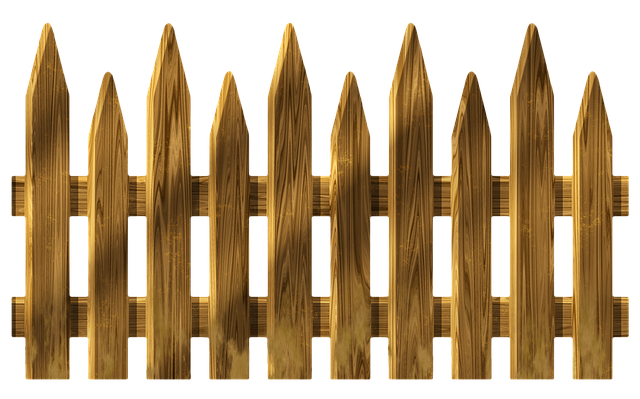Fencing a vast property doesn’t have to break the bank. This article explores cost-effective fencing solutions tailored for large properties, addressing diverse needs from security and privacy to aesthetic appeal and environmental considerations. We delve into traditional vs. innovative options, natural materials, DIY installations, pre-assembled fences, and long-term cost-saving strategies. By considering these approaches, property owners can enhance their spaces without compromising finances.
- Understanding Large Property Fencing Needs
- Traditional vs. Cost-Effective Options
- Natural and Eco-Friendly Solutions
- DIY and Pre-Assembled Fences
- Security and Privacy Considerations
- Long-Term Cost Savings Strategies
Understanding Large Property Fencing Needs
Fencing large properties presents unique challenges compared to smaller plots. The primary consideration is durability and strength to withstand potential environmental factors like harsh weather, strong winds, or heavy wildlife. Additionally, large properties often require extensive fencing to define boundaries, enhance security, and provide privacy for various outdoor spaces.
These needs extend beyond mere aesthetics; practical aspects such as ease of maintenance, security features, and integration with the landscape are essential. Cost-effective solutions for large property owners should focus on long-lasting materials that can be installed efficiently while adhering to local regulations, ensuring both functionality and visual appeal.
Traditional vs. Cost-Effective Options
When it comes to fencing large properties, traditional options often involve extensive labor and materials, making them a significant financial investment. These methods typically include building sturdy wooden or metal fences, which, while durable, can be time-consuming and costly to install. The process involves measuring, cutting, assembling, and painting, requiring skilled labor and specialized equipment.
In contrast, cost-effective fencing solutions offer a more efficient and affordable approach. These modern alternatives utilize innovative materials and designs, such as vinyl or chain link fences, which are lightweight, easy to install, and require minimal maintenance. This simplifies the installation process, reduces labor costs, and minimizes potential damage during construction, making them an attractive choice for large properties on a tight budget.
Natural and Eco-Friendly Solutions
Many modern homeowners are seeking fencing solutions that not only provide security but also contribute to a more sustainable environment. Natural and eco-friendly materials offer an appealing alternative to traditional fencing, especially for large properties. Options like bamboo, recycled plastic, or wood from sustainably managed forests can significantly reduce the carbon footprint of your outdoor space.
These materials are not only environmentally friendly but also aesthetically pleasing, blending seamlessly with natural landscapes. Bamboo, for instance, is a fast-growing grass that can be harvested without damaging the plant, making it a renewable resource. Similarly, recycled plastic fencing offers durability and longevity while diverting waste from landfills, contributing to a circular economy.
DIY and Pre-Assembled Fences
DIY fencing can be an attractive, cost-effective option for large property owners looking to enhance their outdoor spaces. Many modern fence kits offer pre-assembled panels that are easy to install, requiring minimal tools and expertise. These panels typically feature sturdy materials like vinyl, wood, or metal, ensuring durability and long-lasting performance. The do-it-yourself approach allows homeowners to customize designs, heights, and styles according to their preferences and the unique layout of their property.
Pre-assembled fences offer a balance between DIY flexibility and professional quality. These ready-to-install panels can be purchased online or from home improvement stores, providing a convenient solution for those who want the savings of a DIY project without the extensive labor. With a few simple steps, these fences can transform open areas into defined spaces, offering privacy, security, and aesthetic appeal, all while remaining within budget.
Security and Privacy Considerations
When considering fencing for large properties, security and privacy are paramount. A robust fence design, made from durable materials like high-strength steel or wood, can deter unauthorized access and provide a sense of safety for residents. Features such as locked gates, security cameras integrated into the fence system, and motion sensors can further enhance security measures.
Privacy is equally important, especially in expansive open spaces. Fence styles that incorporate solid panels or latticework with dense foliage offer visual blocking, allowing homeowners to enjoy their property’s beauty while maintaining a sense of seclusion from neighboring areas. Customizable options like height adjustments and specific designs cater to individual preferences for both security and privacy.
Long-Term Cost Savings Strategies
Implementing cost-effective fencing solutions for large properties isn’t just about initial savings; it’s also about long-term strategic choices that can help reduce overall maintenance and replacement costs. Opting for durable materials like high-density polyethylene (HDPE) or steel, which are less susceptible to rot, rust, or damage from pests, can significantly extend the lifespan of your fence. These materials require minimal upkeep, reducing labor and material expenses over time. Additionally, investing in a quality fence with robust design elements can deter potential intruders or unwanted animals, preventing costly damages to your property.
Regular inspection and maintenance, though essential, don’t have to be expensive. Simple measures like checking for loose posts, tightening connections, and repairing minor damage can keep your fence in top condition without breaking the bank. Compare different fencing contractors and suppliers to find the best prices without compromising on quality. Moreover, understanding local regulations and adhering to building codes can help avoid costly fines and potential future repairs.
